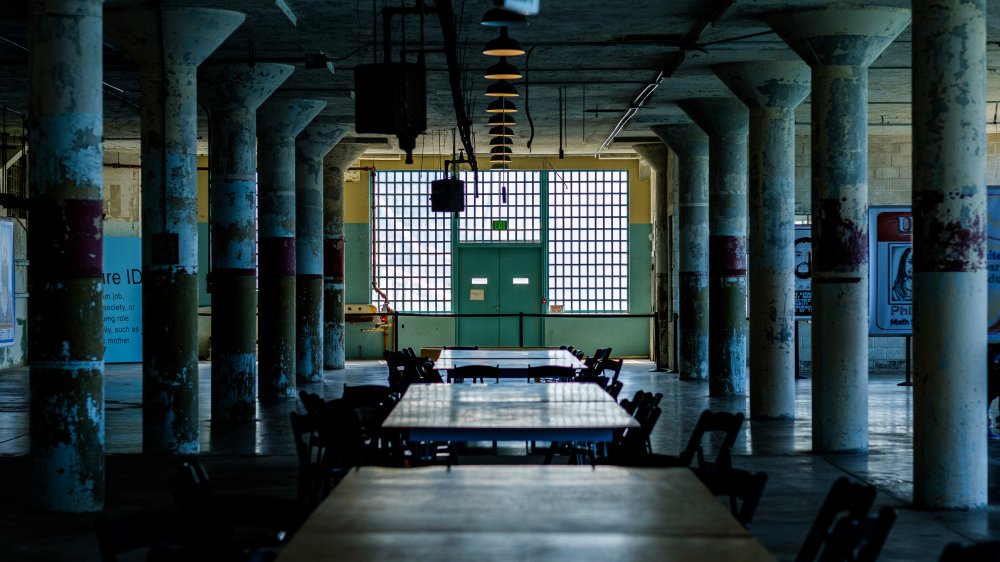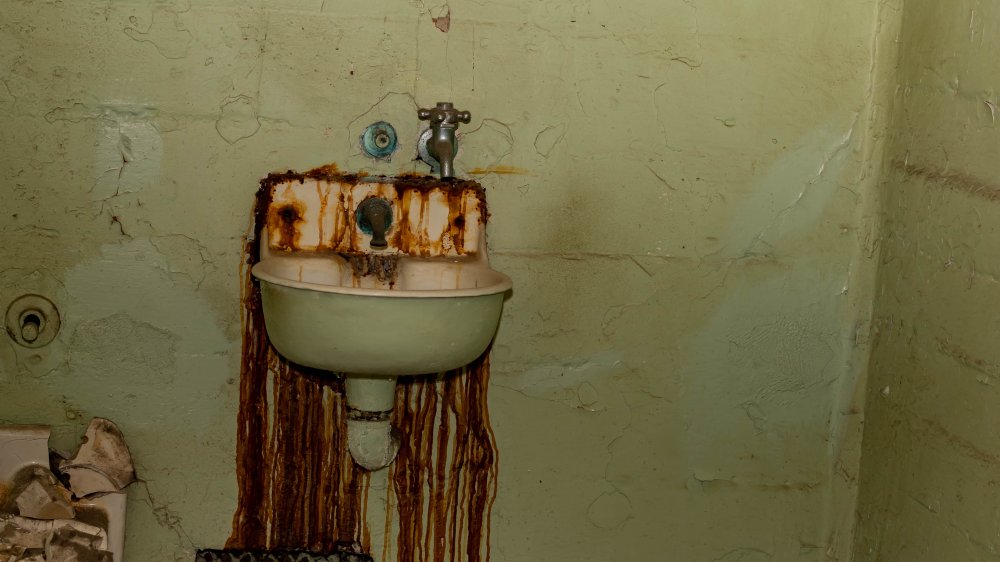The Truth About The Brutal Punishments In Alcatraz
In the 1920s and '30s, the United States was experiencing a crime wave like no other. The surge of lawlessness caused by Prohibition was intensified by the economic devastation and widespread desperation of the Great Depression, and the federal government was in need of a solution. With voguish gangsters and bootleggers like Al "Scarface" Capone and George "Machine Gun Kelly" Barnes capturing the public's attention, the U.S. government knew it needed an equally dramatic response to their sensational criminality, one that would strike fear in the hearts of any others even considering getting up to no good. That solution: the Alcatraz Federal Penitentiary.
Alcatraz was designed to house the worst of the worst in the U.S. prison system at the time. It was inaugurated as a maximum security federal prison in 1934, but had already served as a military prison since the 1850s. As Smithsonian noted, by 1937, the prison's reputation for strict discipline and harsh punishments had earned the 22-acre patch of land in San Francisco Bay the ominous moniker "Uncle Sam's Devil's Island." The purpose of the federal prison that would also come to be known as "The Rock" was two-fold: to incarcerate the country's most notorious and incorrigible criminals, and to serve as stark visual warning of the federal government's new no-nonsense approach to crime fighting.
The strict code of silence at Alcatraz
The man the U.S. Bureau of Prisons tapped to bring discipline to the nation's unruliest of bad guys was James A. Johnston. He had already served as warden at two other famous California state prisons, San Quentin and Folsom. Johnston's reforms of giving inmates jobs that resembled real work outside the prison walls, rather than the traditional chain gang work, had earned him the nickname the "Golden Rule Warden." Despite his more "humane" approach to incarceration, however, his harsh punishments would go on to be the stuff of prison legend. His most severe disciplinary measure was so hard on inmates that it would end up only lasting the first few years of the federal prison's existence. His strict order of silence was said to have driven some inmates insane. An ex-gangster and bank robber named Rufe Persful even took a hatchet to his own hand, chopping off four of his fingers in an attempt to get transferred elsewhere.
David A. Ward's 2009 book Alcatraz: The Gangster Years lists several headlines from 1937 that highlighted the horror of the policy, such as "Alcatraz Silence 'Breaks' Toughest Gangsters" and "Convicts Can't Win But Silence Is Worse than Machine Guns." Another paper compared Alcatraz to "some dark chapter out of medieval lore [where] ... the most hardened and desperate criminals in the country [are confined] under the most rigid system of discipline ever enforced in America." Johnston's code of silence would be eased in 1937.
Punishments at Alcatraz were even worse than the code of silence
Punishments on "Devil's Island" were particularly brutal. According to Crime Magazine, the prison's worst-behaved were sent to D Block, which contained 42 cells featuring varying degrees of punishment. The worst of these was most definitely the Strip Cell. Here prisoners were completely deprived of all sensory stimuli and anything resembling human comfort. Also called the "Oriental," this was a dark cell encased in steel that lacked a toilet and sink. It had a small hole in the floor for going to the bathroom, the flush lever for which was operated not by the inmate, but by a guard outside the cell. The punished inmate was locked inside complete darkness and given a thin mattress at night, which was taken away in the morning. Such severe punishment was usually only limited to one to two days.
The "hole" was another type of extreme isolation punishment that resembled the Strip Cell in nearly every way, except it had a sink, a toilet, and a low-wattage light bulb. Similar to the Strip Cell, inmates in these cells also had their mattresses taken away during the daytime. Punishments in the hole could last up to 19 days. The rest of the D Block cells were also a form of solitary confinement, but they had views of San Francisco across the bay. This glimpse of the freedom they lacked was also considered part of the torture of the punishment.


